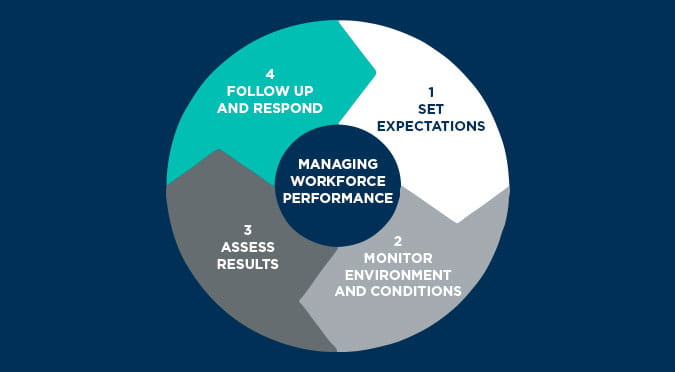
Archive | InBrief
Is your management team equipped to drive workforce improvement?
Is your management team equipped to drive workforce improvement?
Many companies look to increase the efficiency of their workforce through implementing new work methods, labor standards, and technology. However, a critical piece of the improvement process is often overlooked – performance management. According to Wikipedia, “performance management is the term used to refer to activities, tools, processes, and programs that companies create or apply to manage the performance of individual employees, teams, departments, and other organizational units within their organizational influence.”
In my experience, the key to success (or failure) of workforce improvement initiatives has always been the ability of the front-line supervisors and managers to proactively coach employees. Often, these supervisors and managers have been promoted to management positions because they were the best workers in their respective operations. While there may be signs of leadership potential in their efforts and actions, few companies have programs in place that equip these individuals to become successful leaders. Without the right tools and training, many of these individuals become reactive to their operations and spend most of their time “putting out fires” instead of proactively coaching employees to improve workforce performance. For example, a retail store manager may notice exceptionally long checkout lines. Instead of trying to determine the cause of long lines, the manager immediately jumps in to open a new register. Despite good intentions, this short-sighted approach does nothing to help solve the underlying issue.
Develop front-line supervisors to their full potential with the right tools and training
So, what does a good performance management program look like? A proper program consists of the right tools and training – implemented properly and used consistently. For example, a receiving supervisor should have a matrix to reference to know approximately how much time it should take his receiver to unload a given trailer type based on the number of pallets in the trailer. This tool, based on labor standards, allows the supervisor to quickly reference a worksheet or pocket guide to give an employee a clear expectation of performance expectations while assigning work. Organizations might also consider a Method Compliance Audit. This audit allows a supervisor to observe an employee performing a function and understand where the employee may have deficiencies related to the prescribed methods. The supervisor is then able to provide coaching and feedback to the employee based on those specific deficiencies to help the employee improve.
Training should involve many topics related to performance management; how to apply the tools, root cause analysis, difficult conversations, and general leadership can go a long way in helping management teams shift from ineffective to effective. Recently, I led a performance management training where we used role playing scenarios as part of the training to help supervisors practice difficult conversations with their peers in a safe environment. Feedback from the management team was overwhelmingly positive. Classroom training sessions, followed by on the job shadowing, equip supervisors with the tools and knowledge they need to drive workforce efficiency.
Assessing manager effectiveness
Even with the right tools and training, many managers and front-line supervisors find themselves spending too much time on low value activities. Today’s managers are bombarded by emails and other task-based work, impacting their ability to manage and lead. They may feel comfortable coaching, giving feedback, and setting clear expectations, but they may not be spending as much time as they should be communicating that feedback. Through our manager effectiveness blueprint, we work with organizations to identify these gaps and re-assign tasks so that your managers are spending time where they can add the most value to your operations.



